Ready in an hour, this hearty loaf of gluten-free Irish brown bread is super easy to make, no kneading required! With a tight crumb characteristic of soda bread and slightly sweetened with maple syrup, it’s perfect for St. Patrick’s day or anytime.
Eat this gluten-free brown bread as avocado toast, rustic sandwiches, or simply toasted and spread with fresh butter or jam! Totally dairy-free and vegan too, but no one would care.
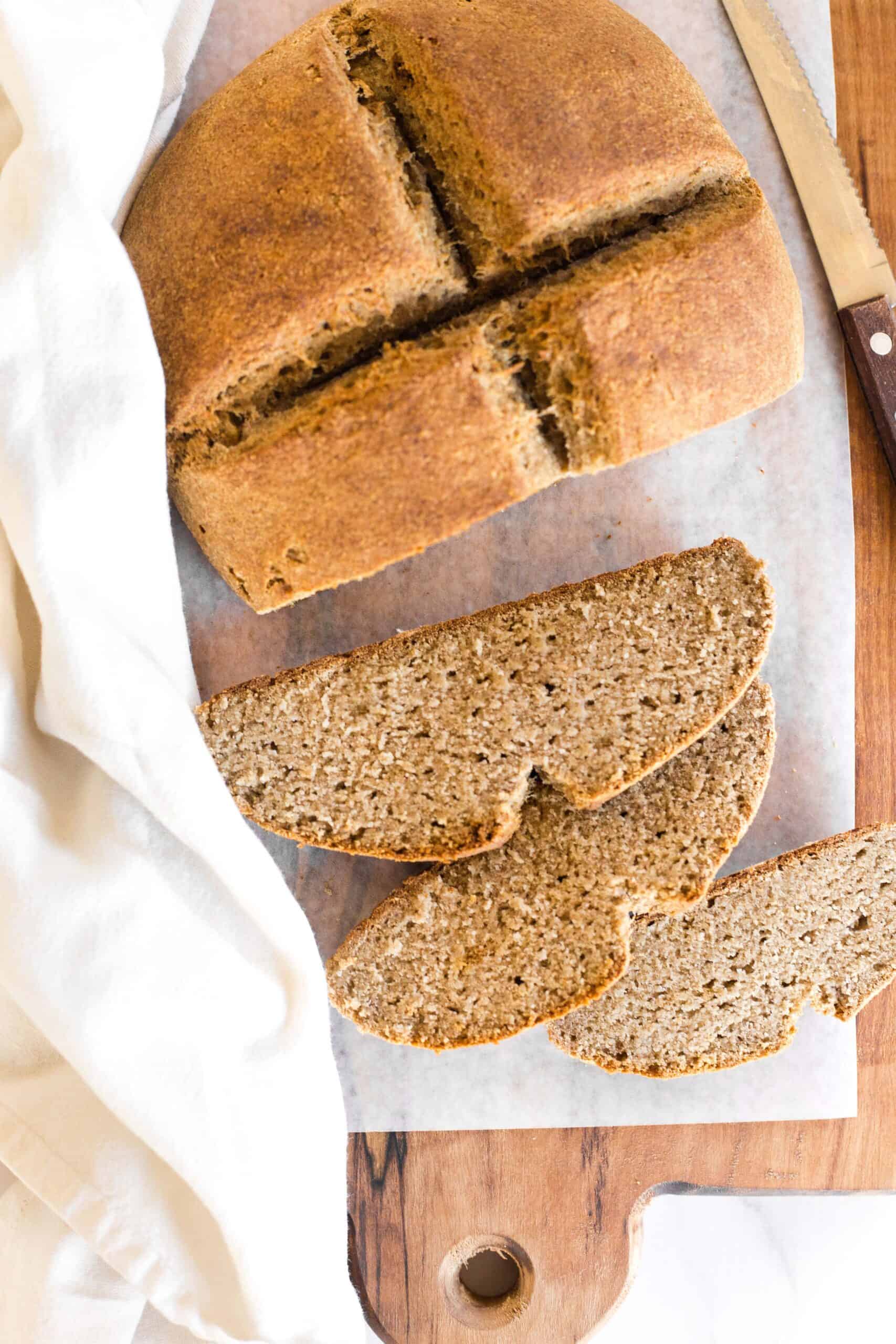
Want to save this recipe?
Enter your email & I’ll send it to your inbox. Plus, get great new recipes from me every week!
Jump to:
- Bread Baking is My Passion
- What is Irish Brown Bread?
- Is Irish Brown Bread Gluten-Free?
- Gluten-Free Brown Soda Bread (Vegan too!)
- Why This Recipe Works:
- Ingredients You’ll Need:
- Ingredient Notes/Substitutions:
- How to Make Irish Brown Bread (Step by Step):
- Dish by Dish Tips/Tricks:
- Recipe FAQs:
- What to Eat with this Gluten-Free Brown Soda Bread:
- Other Gluten-Free Bread Recipes You’ll Love:
- Gluten-Free Irish Brown Bread (Dairy-Free, Vegan)
Bread Baking is My Passion
If you’ve followed this blog for some time, you know that I am a big fan of homemade bread.
In fact, I bake a loaf of fresh bread at least once a week, and some of our favorite yeast breads include this popular buckwheat bread, this soft gluten-free white bread, this fluffy brown rice bread, and this delicious potato bread.
However, I also love baking breads without yeast, because some days I don’t have the time to wait for the dough to rise. A few popular ones include our honey oat bread, this delicious gluten-free naan bread, and Irish soda bread.
Today, I’m making this gorgeous loaf of Irish brown soda bread (which is perfect for celebrating Saint Patrick’s day), so let’s get started!
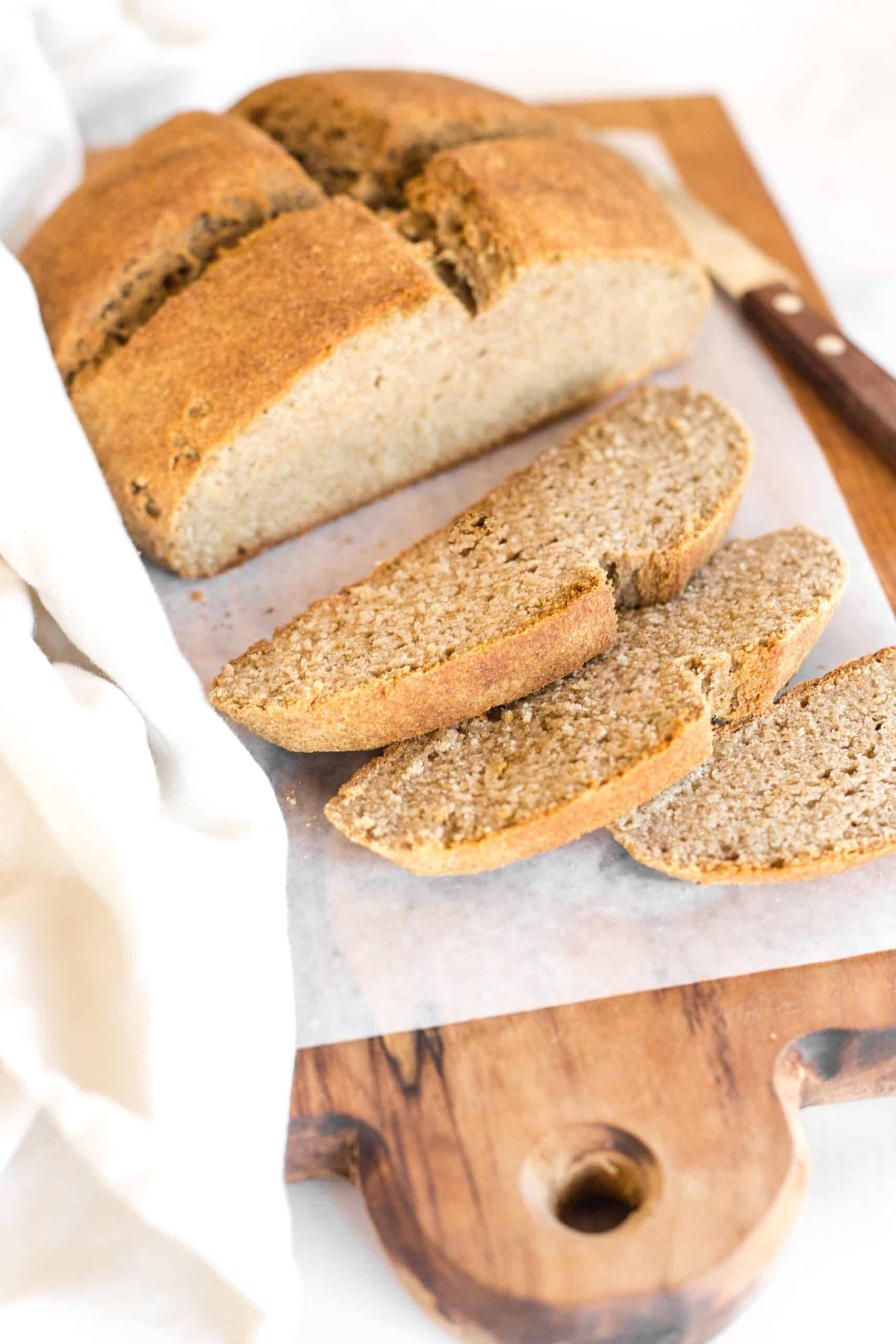
What is Irish Brown Bread?
Irish brown bread is basically a wholegrain version of traditional Irish soda bread – you will probably recognize it as a rustic round loaf with a cross cut on top of the loaf.
It has a crunchy crust with a tender but dense crumb, and is perfect for eating alongside stews or soups.
(Fun fact: The reason for cutting the cross on top is to allow the heat to better penetrate the dough as it bakes so the center of the loaf cooks evenly.)
Another main characteristic of traditional Irish brown bread is the fact that is leavened with baking soda and baking powder instead of yeast, which results in a hearty loaf of bread with a tight crumb and a denser texture (some say it feels more like a scone than yeast bread).
Is Irish Brown Bread Gluten-Free?
Traditional Irish brown soda bread is made with whole wheat flour (which contains gluten), so it is usually not safe for Celiacs or those with gluten-intolerance, unless specifically stated to be certified gluten-free.
Gluten-Free Brown Soda Bread (Vegan too!)
Today, we’re making a gluten-free version of this quick bread, and replacing normal wholemeal flour with a blend of wholegrain gluten-free flours (particularly brown rice flour, millet flour and sorghum flour).
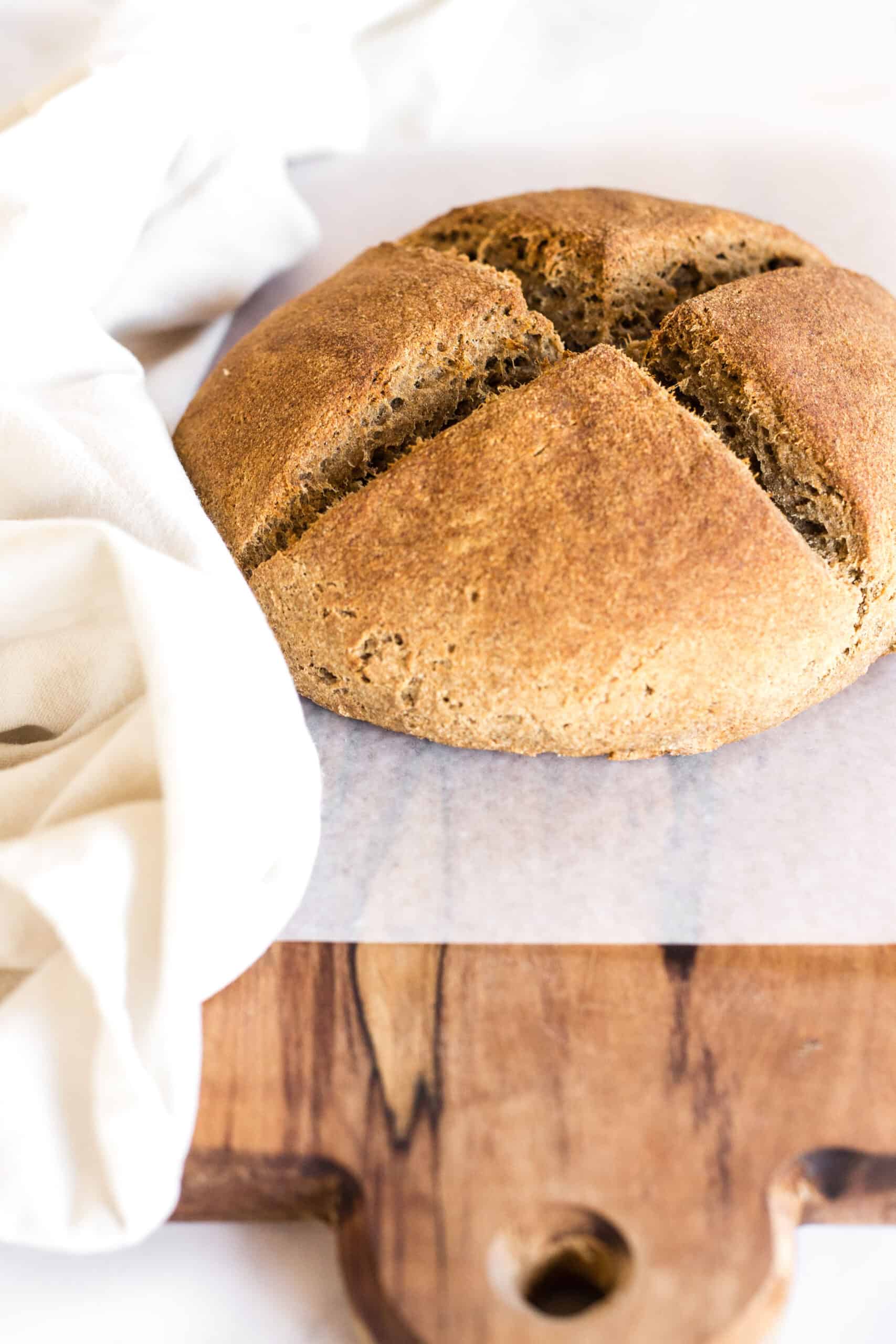
Why This Recipe Works:
- Simple Ingredients: The basic ingredients required to make this Irish brown soda bread recipe are easily accessible at the local grocery store, and you might already have them in your kitchen!
- Easy to Make, No Knead: All you need to do is to mix the wet ingredients with the dry ingredients to form a homogeneous dough, and then shape it into a ball and cut a cross on top of it before baking. Did I also mention that you don’t need to knead the dough? (How much easier does it get?)
- No Yeast or Rising Required: Since the leavening agents in this brown Irish soda bread recipe are baking soda and baking powder, no yeast or rising time is needed! A loaf of this brown soda bread is ready in an hour!
- Totally Gluten-Free, Dairy-Free and Vegan: The best part is that this loaf of brown bread is 100% gluten-free, dairy-free and vegan, which means that even those with Celiac disease or gluten and lactose intolerances can enjoy it without worries.
Ingredients You’ll Need:
Here’s a visual overview of the ingredients required for this gluten-free Irish brown soda bread recipe.
(For exact measurements, please scroll down to the printable recipe card at the bottom of this post.)
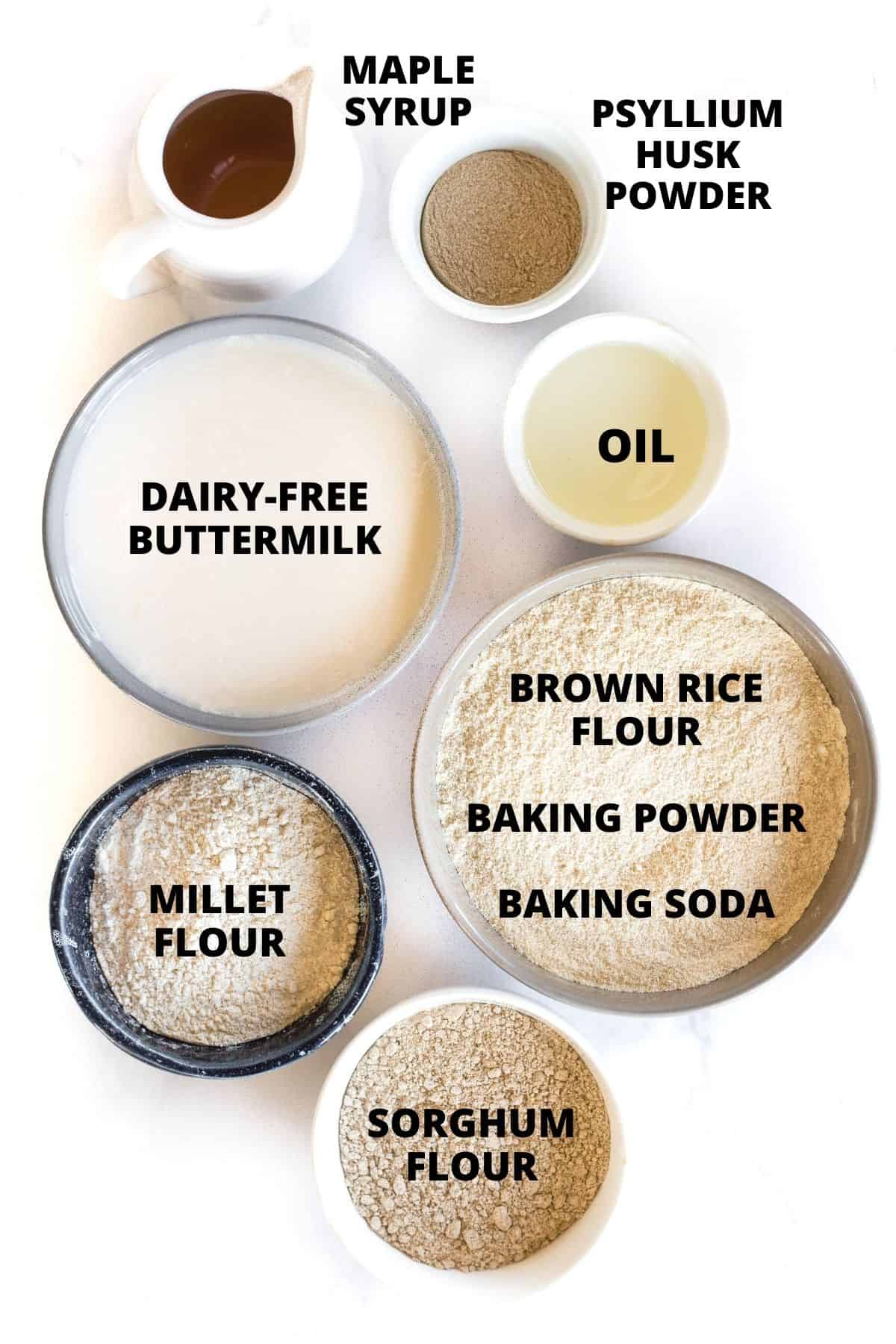
Ingredient Notes/Substitutions:
- Brown Rice Flour: I like using brown rice flour as the base of this gluten-free brown bread recipe. Alternatively, you may also use a good-quality gluten-free all-purpose flour blend if you prefer.
- Millet Flour: You can make your own millet flour or buy a packet. If you don’t have millet flour, you can substitute it with sorghum flour, amaranth flour, or buckwheat flour.
- Sorghum Flour: If you don’t have sorghum flour, you can use millet flour, amaranth flour, oat flour, or buckwheat flour.
- Psyllium Husk Powder: Psyllium husk powder is the substitute for gluten in this gluten-free recipe and helps to bind the ingredients together. Make sure you use the powder version. If you only have access to whole psyllium husks, you can grind the husks in a high-speed blender or coffee grinder until you get a fine powder.
- Baking Soda: Since Irish brown soda bread is leavened with baking soda, this is an important ingredient.
- Baking Powder: In addition to baking soda, we’re also using baking powder as an extra leavening agent to help the dough rise even more. If you have Celiac disease or are gluten-intolerant, make sure to use certified gluten-free baking powder.
- Maple Syrup: I like using maple syrup to sweeten this gluten-free Irish brown bread. Alternatively, you may use molasses, agave nectar or brown sugar (if using brown sugar, dissolve it in 2 tablespoons of warm water or additional buttermilk first). If you are not vegan, you may also use honey instead.
- Dairy-Free Buttermilk: To help the batter rise, we need to create an acidic environment, and the sourness of the buttermilk will do just that. If you don’t have buttermilk, simply combine 2 cups of non-dairy milk (such as almond milk or cashew milk) or regular milk with 2 tablespoons of white vinegar or lemon juice and let it sit for a while. Alternatively, if you are not lactose-intolerant, you may use normal buttermilk instead. I like to warm the buttermilk a little before adding it to the dry ingredients for best results.
- Sunflower Oil: I like using sunflower oil because I always have a bottle of it on hand. Alternatively, you may also use another vegetable oil such as olive oil, avocado oil, or melted coconut oil.
How to Make Irish Brown Bread (Step by Step):
1. Preheat and Line
Preheat the oven to 350F and line a medium cast iron skillet or baking sheet with parchment paper.
2. Whisk Dry Ingredients
In a large mixing bowl, combine the brown rice flour, millet flour, sorghum flour, psyllium husk powder, baking soda, and baking powder together. Whisk well to combine.
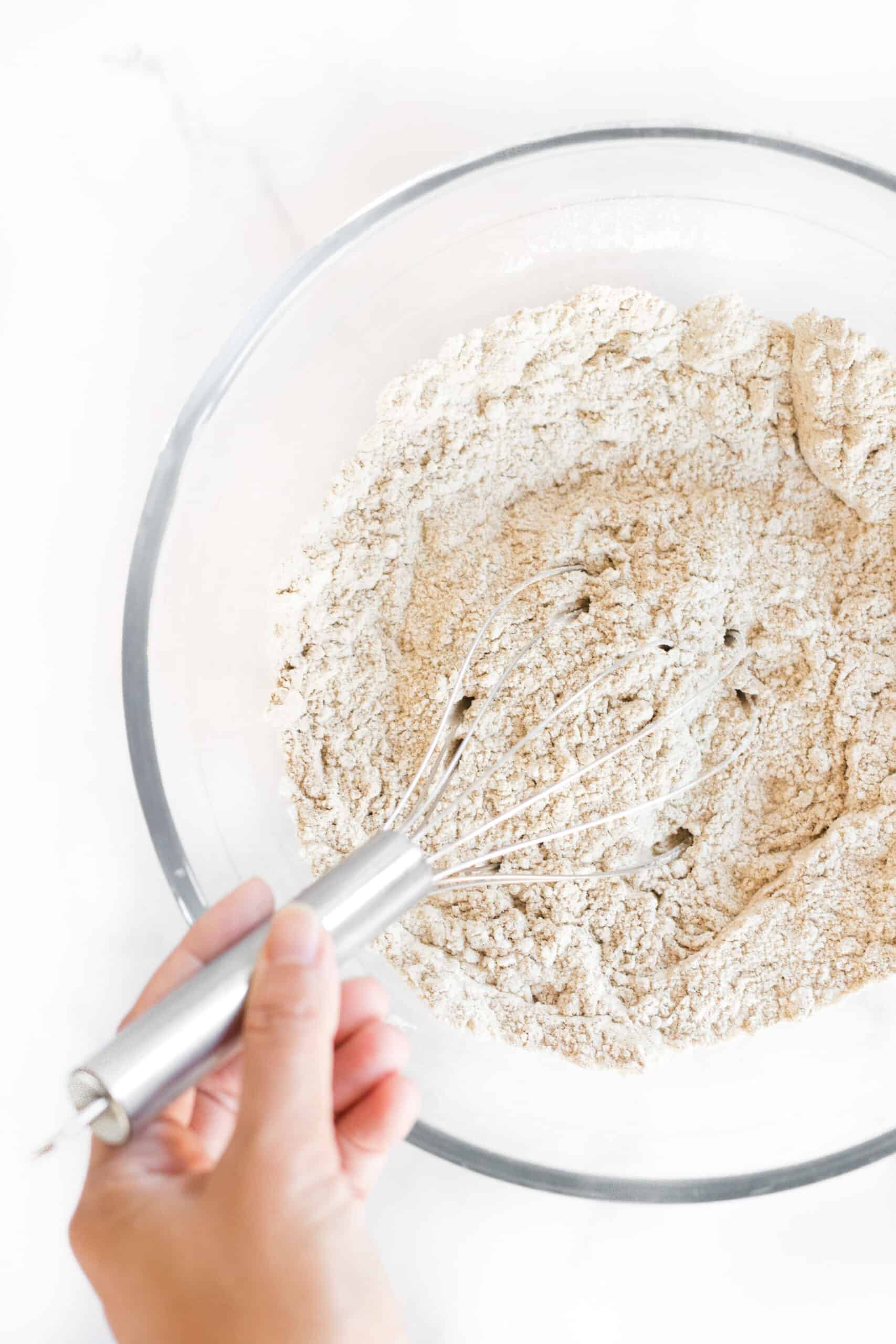
3. Add Wet Ingredients to Form Dough
Add the maple syrup, warm dairy-free buttermilk mixture, and sunflower oil to the large bowl of dry ingredients. Mix well to get a thick but homogeneous dough (dough will be slightly stick but that’s fine).
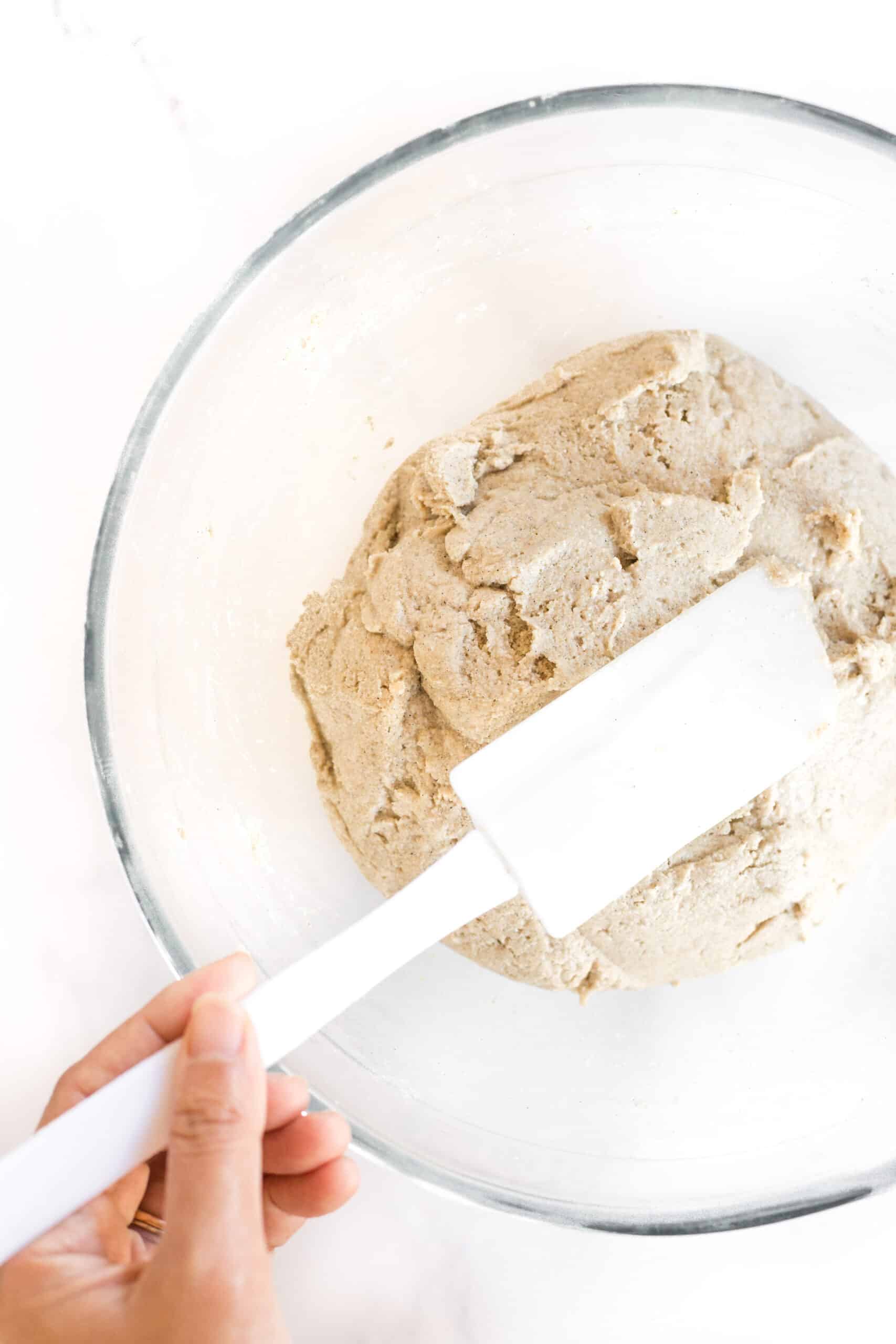
4. Shape Dough into Ball
Shape the dough into a ball and transfer dough the prepared lined cast iron skillet or baking sheet.
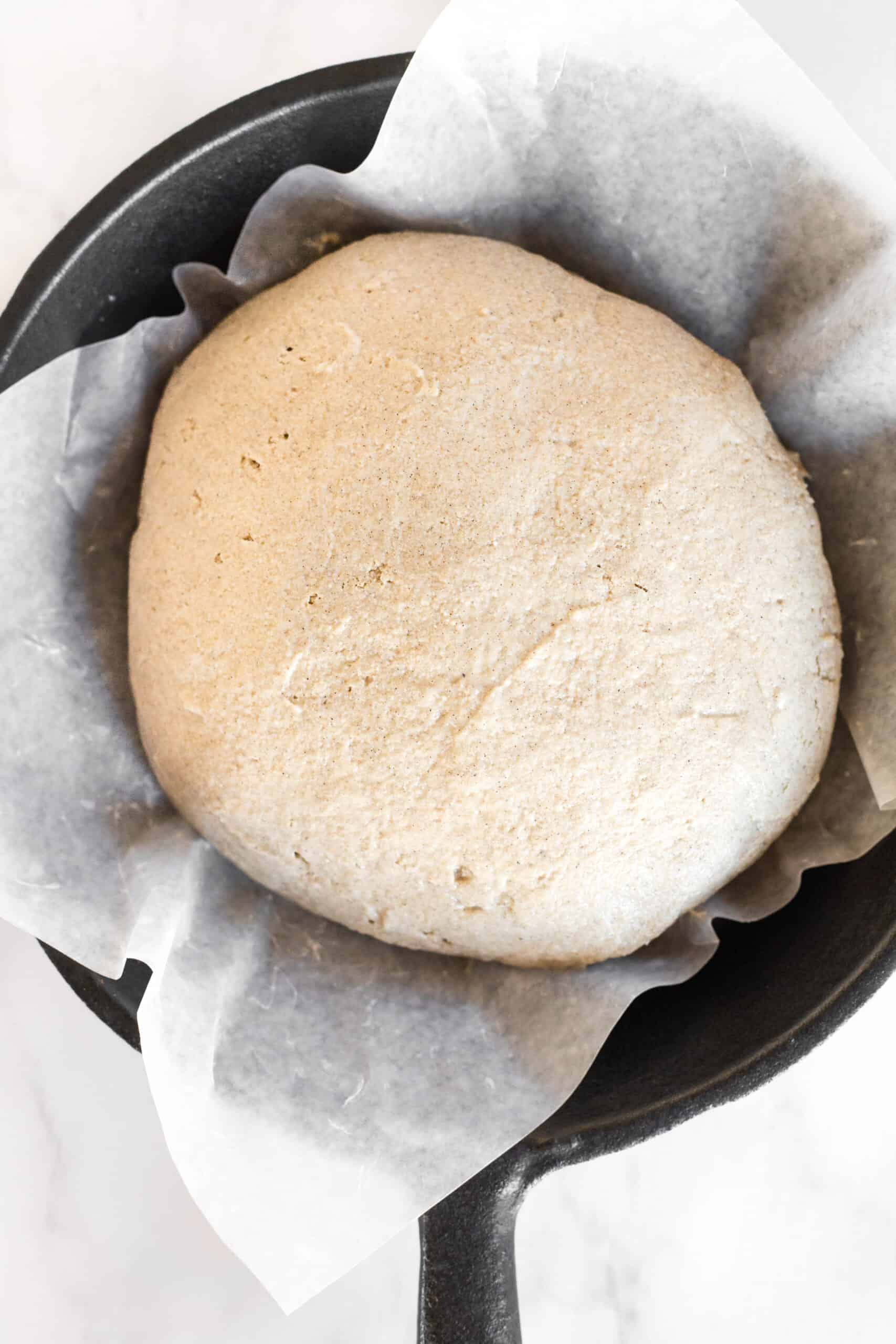
5. Cut a Cross on Top of Dough
Cut a deep cross on the top of the dough (use a smooth-edged sharp knife to slice 2 perpendicular lines on top of the dough).
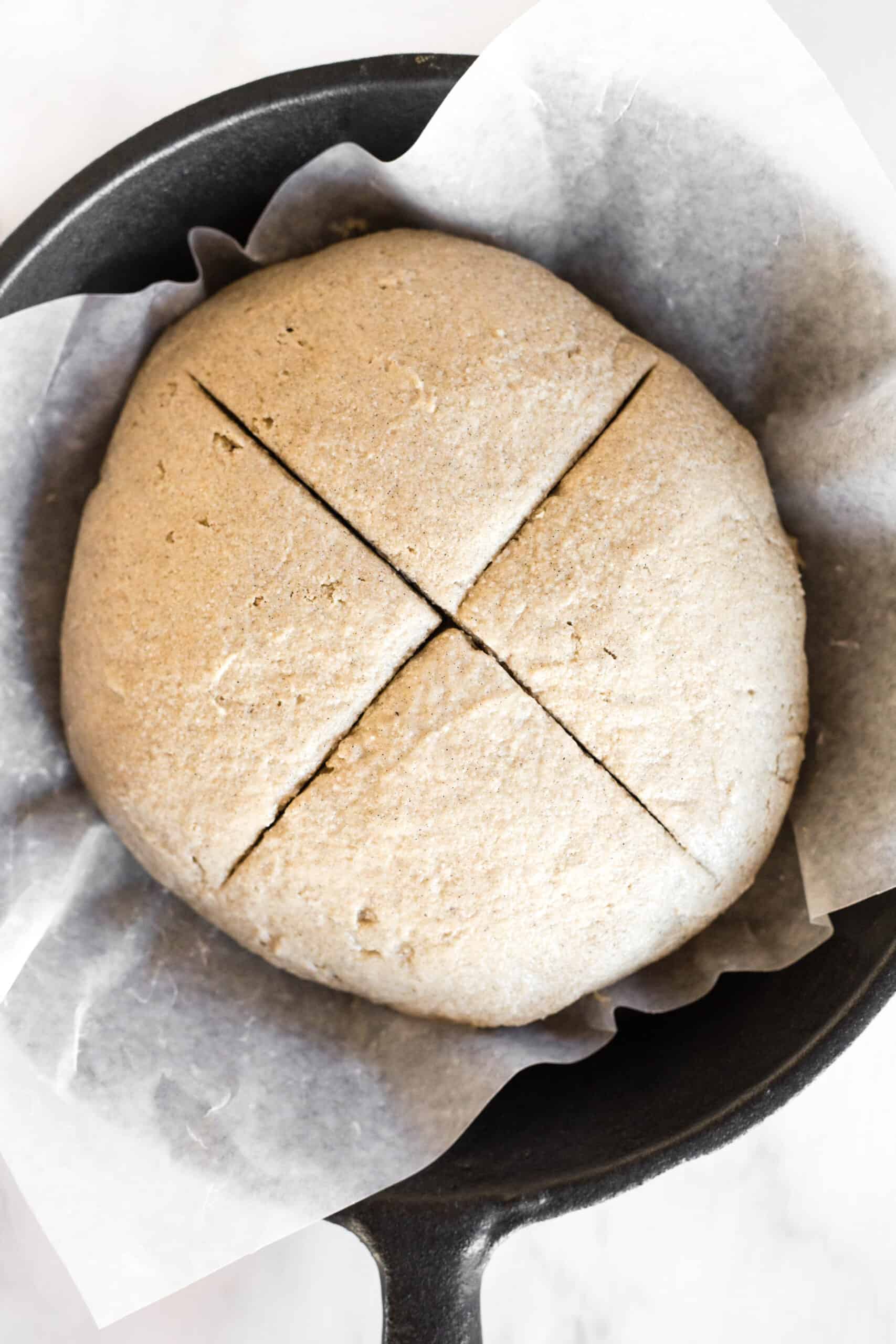
6. Bake Until Golden Brown
Bake the dough for approximately 50 minutes until golden brown on top and a toothpick inserted in the middle comes out clean.
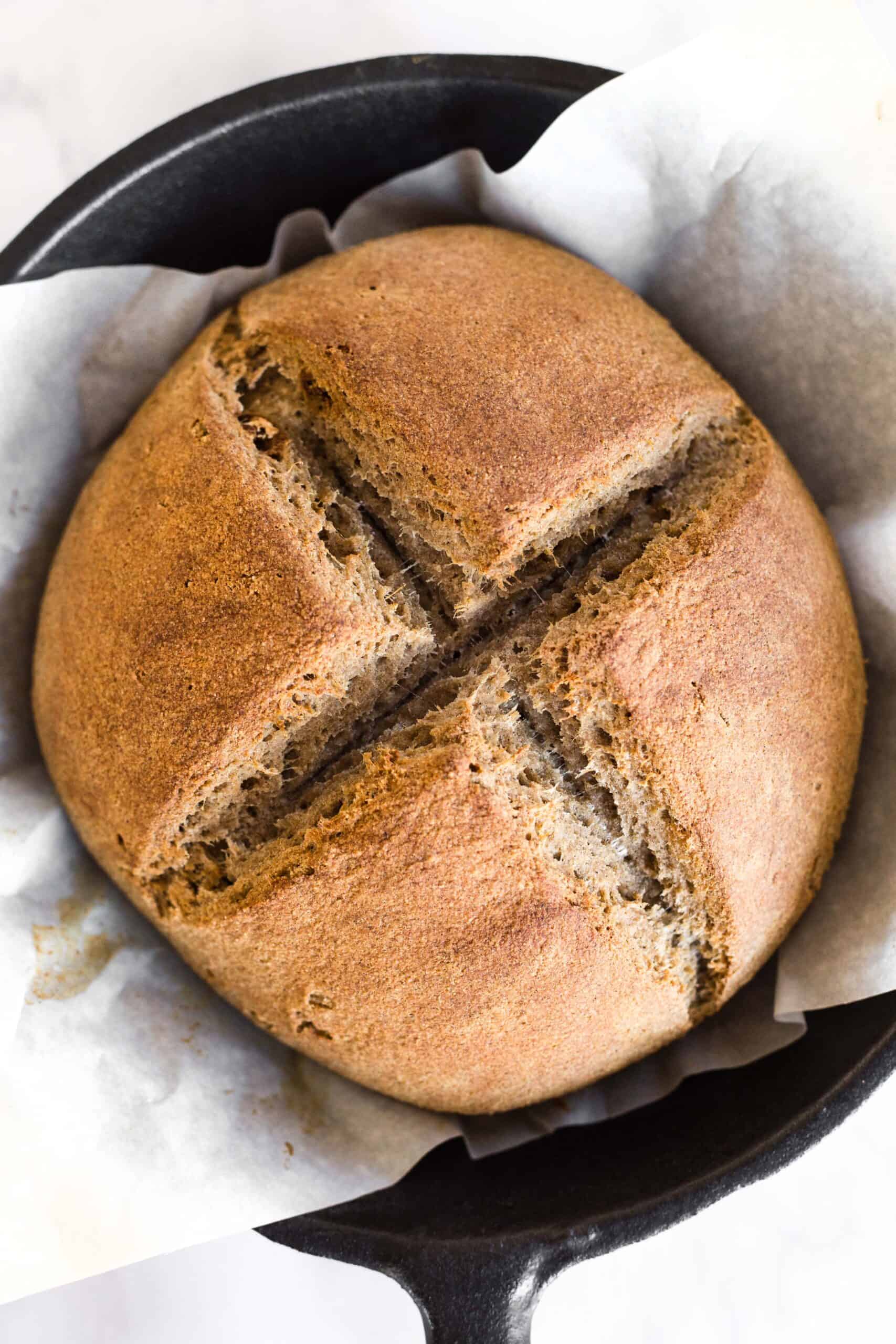
7. Cool Completely Before Slicing
Let the loaf of delicious brown bread cool completely on a wire rack before slicing into it.
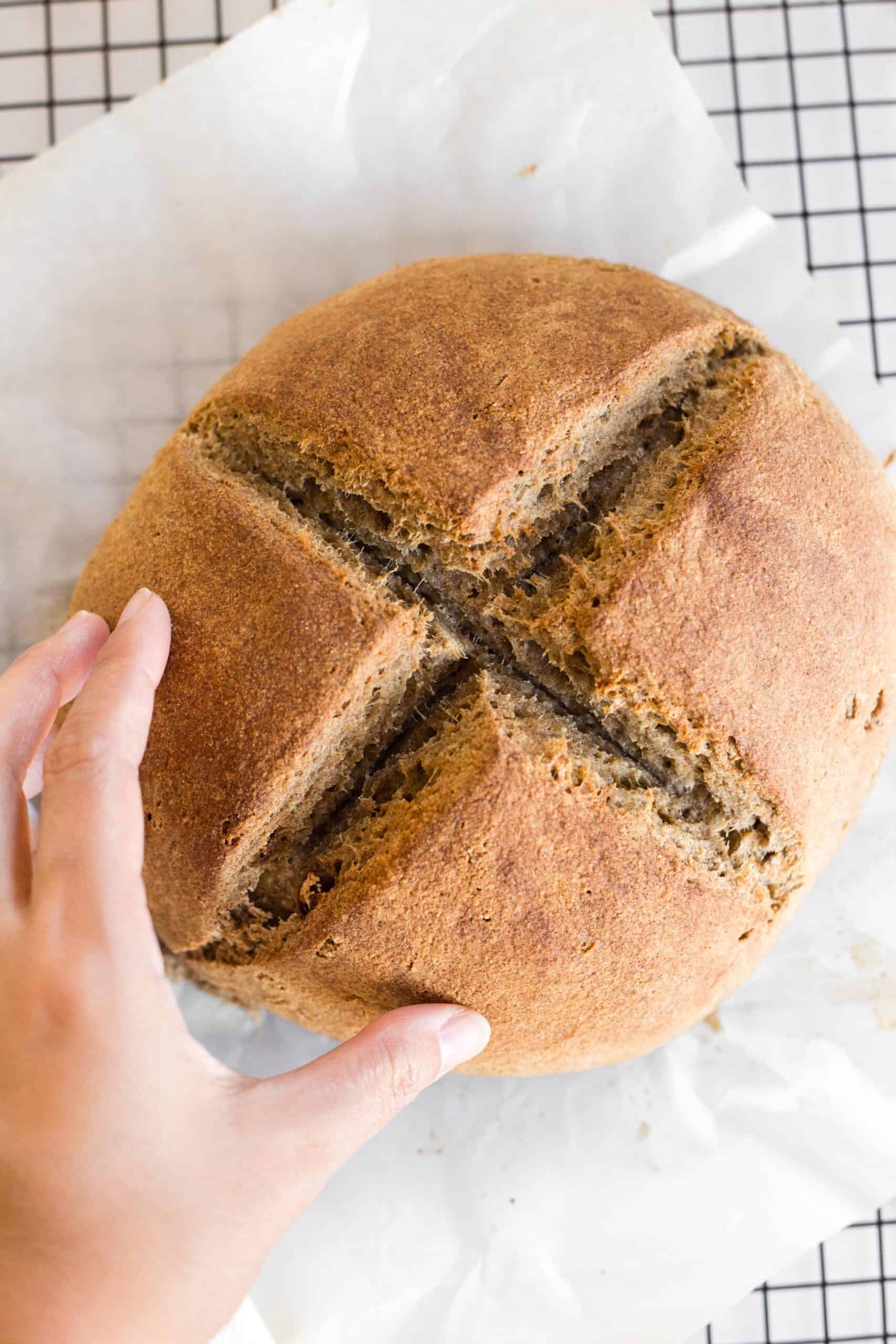
Dish by Dish Tips/Tricks:
- Optional Add-Ins: If you wish, you may fold raisins, chopped nuts or caraway seeds into the dough for extra flavor and texture.
- Make it Savory: If you prefer not to have a sweet bread, feel free to leave out the maple syrup and add a pinch of salt instead.
- Prefer a Whiter Bread?: If you prefer a whiter bread, simply replace half of the wholegrain flours with all-purpose gluten-free white flour instead (or make my gluten-free Irish soda bread).
- Line with Parchment Paper: Make sure to line the cast iron pan with parchment paper as this prevents the bottom of the loaf from sticking to the pan.
- No Cast Iron Pan: If you don’t have a cast iron pan, you can also use a Dutch oven or a regular baking sheet instead.
- Bake in a Loaf Pan: I personally prefer the rustic look that this gluten-free brown bread has in the photos in this post, but if you rather bake the bread in a loaf pan, go ahead!
- Eat it with Stew: Enjoy this gluten-free brown soda bread with a big bowl of hearty stew.
- Prevent Top from Browning too Much: If you find that the top is browning too much, cover the bread with aluminum foil until it has finished baking.
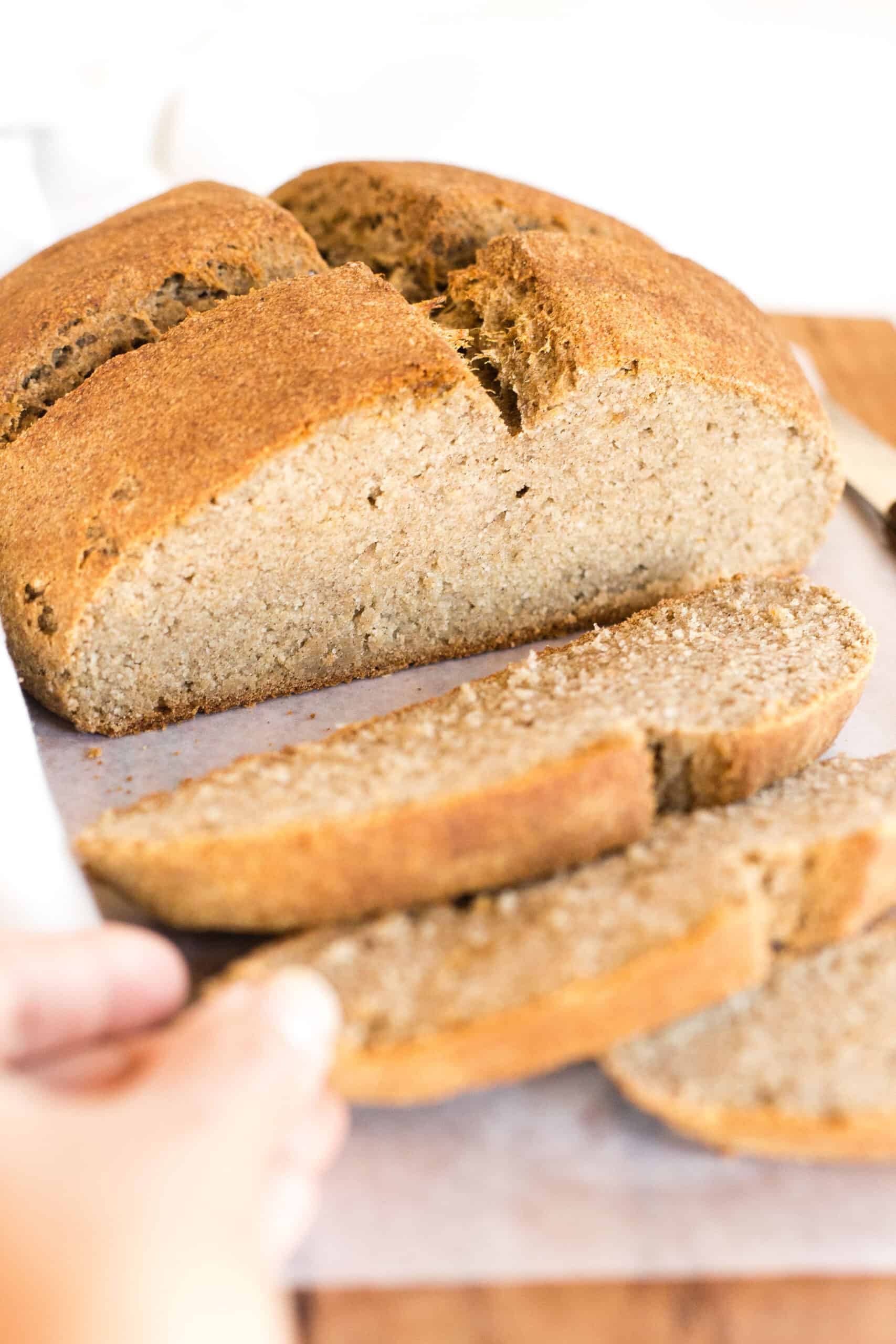
Recipe FAQs:
To store, place the cooled bread in an airtight container and refrigerate for up to 5 days.
To freeze, wrap the fully cooled gluten-free brown bread in various layers of plastic wrap and freeze for up to 2 months. Let the frozen loaf thaw completely overnight in the refrigerator before slicing.
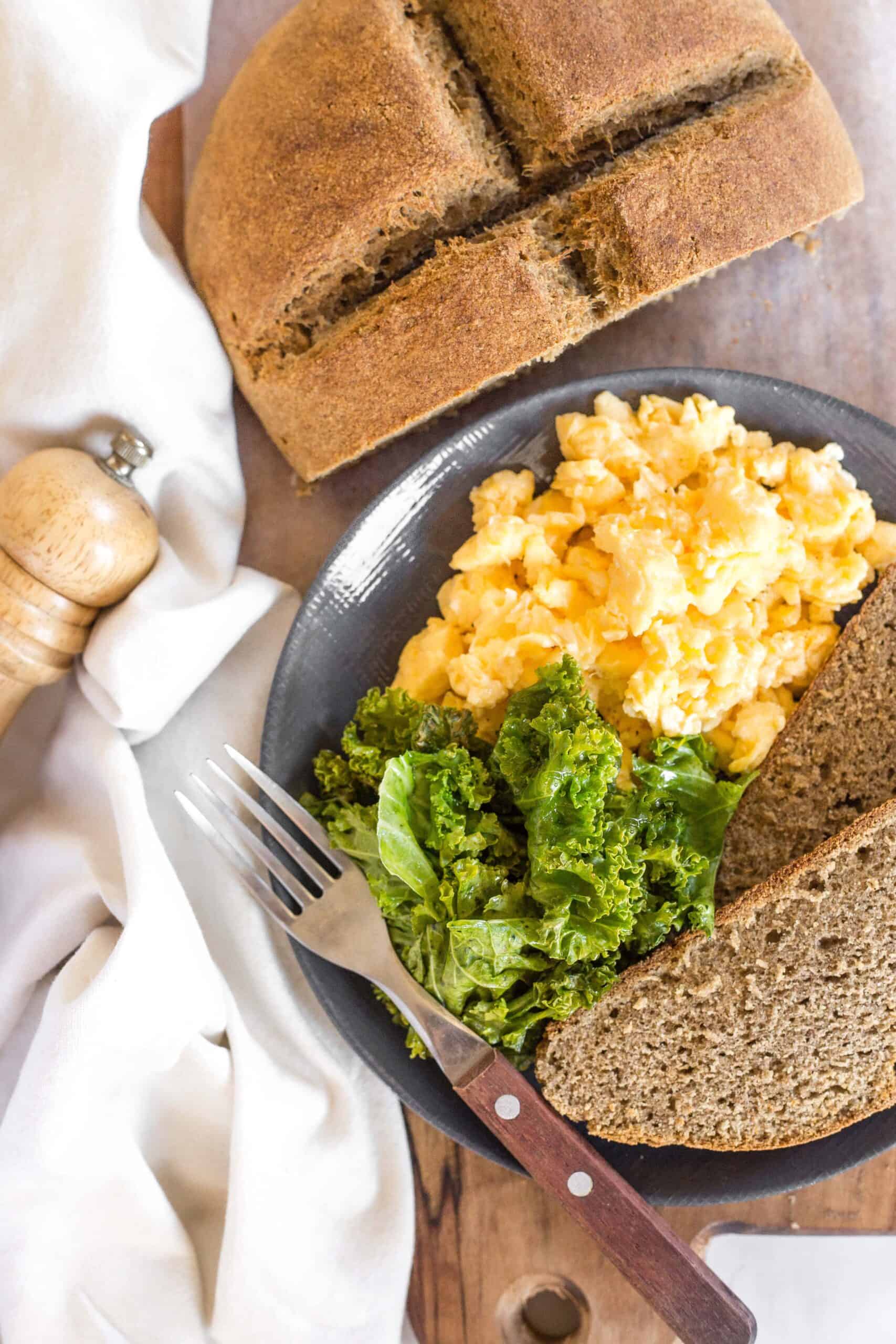
What to Eat with this Gluten-Free Brown Soda Bread:
- Hearty Beef Stew (Gluten-Free, Dairy-Free)
- Beef Stroganoff (Gluten-Free, Dairy-Free)
- Slow Cooker Green Chili Chicken (Gluten-Free, Dairy-Free)
Other Gluten-Free Bread Recipes You’ll Love:
P.S. If you try this recipe, I’d love for you to leave a star rating below, and/or a review in the comment section further down the page. I always appreciate your feedback. Be sure to check out my entire Recipe Index for all the recipes on the blog. You can also follow me on Pinterest, Facebook or Instagram! Sign up for my Email List to get fresh recipes in your inbox each week!
Print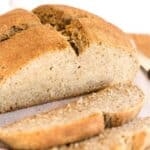
Gluten-Free Irish Brown Bread (Dairy-Free, Vegan)
- Total Time: 1 hour
- Yield: 8 servings 1x
- Diet: Gluten Free
Description
The hearty loaf of Irish brown bread is super easy to make, no kneading required, and comes together in an hour! With a tight crumb characteristic of brown soda bread and slightly sweetened with maple syrup, it’s perfect for St. Patrick’s day or anytime. Eat this gluten-free brown soda bread as avocado toast, rustic sandwiches, or simply toasted and spread with fresh butter or jam! Totally gluten-free, dairy-free and vegan too, but no one would care.
Ingredients
- 2 cups brown rice flour
- 1 cup millet flour
- 1 cup sorghum flour
- 2 tablespoons psyllium husk powder
- 1 teaspoon baking soda
- 2 teaspoons baking powder
- 3 tablespoons maple syrup
- 2 cups warm dairy-free buttermilk
- 2 tablespoons sunflower oil
Instructions
- Preheat and Line: Preheat the oven to 350F and line a medium cast iron skillet or baking sheet with parchment paper.
- Whisk Dry Ingredients: In a large mixing bowl, combine the brown rice flour, millet flour, sorghum flour, psyllium husk powder, baking soda, and baking powder together. Whisk well to combine.
- Add Wet ingredients: Add the maple syrup, warm dairy-free buttermilk, and sunflower oil to the large bowl of dry ingredients. Mix well to get a thick but homogeneous dough (dough will be slightly stick but that’s fine)
- Shape Dough in Ball and Place in Skillet: Shape the Dough into a ball and place on the prepared lined cast iron skillet or baking sheet.
- Cut a Cross: Cut a deep cross on the top of the dough (use a smooth-edged knife to slice 2 perpendicular lines on top of the dough).
- Bake Until Golden Brown: Bake the dough for approximately 50 minutes until golden brown on top and a toothpick inserted in the middle comes out clean.
- Cool Completely Before Slicing: Let the Irish soda bread cool completely on a wire rack before slicing into it.
Notes
Brown Rice Flour: I like using brown rice flour as the base of this Irish brown bread recipe. Alternatively, you may also use a good-quality gluten-free all-purpose flour blend if you prefer.
Millet Flour: You can make your own millet flour or buy a packet. If you don’t have millet flour, you can substitute it with sorghum flour, amaranth flour, or buckwheat flour.
Sorghum Flour: If you don’t have sorghum flour, you can use millet flour, amaranth flour, or buckwheat flour.
Psyllium Husk Powder: Psyllium husk powder is the substitute for gluten in this gluten-free recipe and helps to bind the ingredients together. Make sure you use the powder version. If you only have access to whole psyllium husks, you can grind the husks in a high-speed blender or coffee grinder until you get a fine powder.
Baking Soda: Since Irish brown soda bread is leavened with baking soda, this is an important ingredient.
Baking Powder: In addition to baking soda, we’re also using baking powder to help the dough rise even more. If you have Celiac disease or are gluten-intolerant, make sure to use certified gluten-free baking powder.
Maple Syrup: I like using maple syrup to sweeten this Irish brown bread. Alternatively, you may use molasses or agave nectar. If you are not vegan, you may also use honey instead.
Dairy-Free Buttermilk: To help the batter rise, we need to create an acidic environment, and the sourness of the buttermilk will do just that. If you don’t have buttermilk, simply combine 2 cups of non-dairy milk (such as almond milk or cashew milk) with 2 tablespoons of white vinegar or lemon juice and let it sit for a while. Alternatively, if you are not lactose-intolerant, you may use normal buttermilk instead. I like to warm the buttermilk a little before adding it to the dry ingredients for best results.
Sunflower Oil: I like using sunflower oil because I always have a bottle of it on hand. Alternatively, you may also use another vegetable oil such as olive oil, avocado oil, or melted coconut oil.
Storing/Freezing: To store, place the cooled gluten-free brown soda bread in an airtight container and refrigerate for up to 5 days. To freeze, wrap the fully cooled loaf in various layers of plastic wrap and freeze for up to 2 months.
Adapted from: King Arthur Baking
- Prep Time: 10 mins
- Cook Time: 50 mins
- Category: Bread
- Method: Baking
- Cuisine: Irish

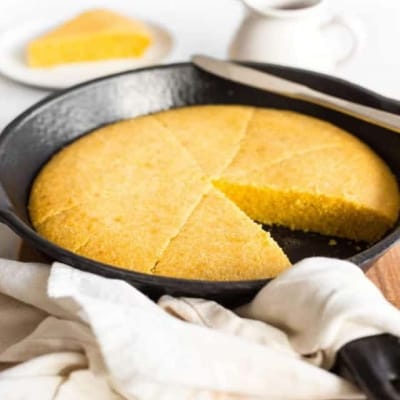
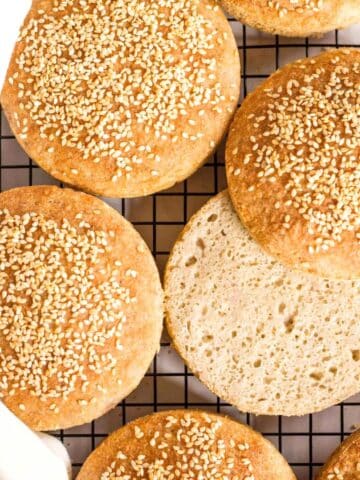
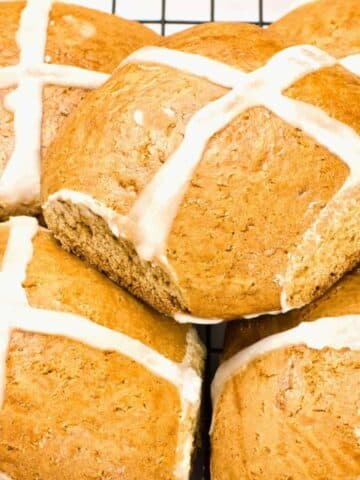
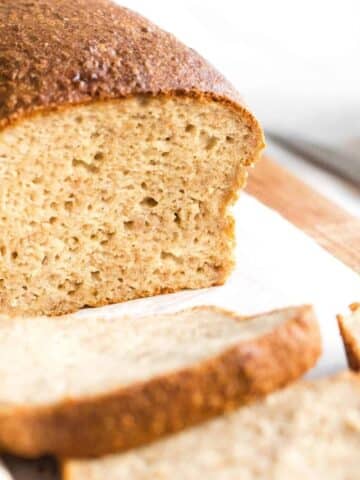
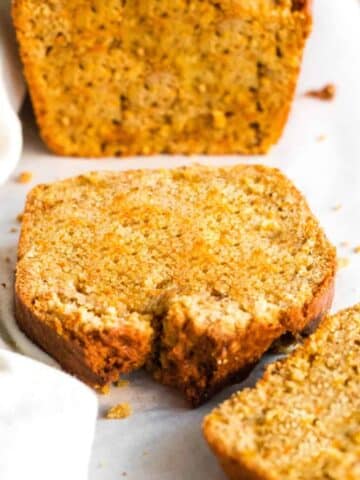
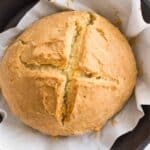
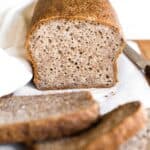
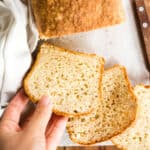
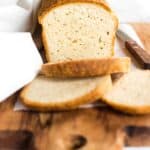

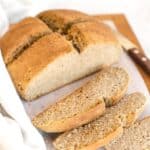
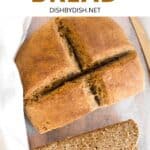
I take my Irish brown bread extremely seriously, and I have spent way too much time researching methods and testing recipes to learn to make an authentic wheat version. I NEVER thought I would find a gluten free recipe that would even come close to the real thing—I’m so glad I was wrong. I tried your recipe today, and I just had my first slice. WOW. It’s the real deal—crusty exterior, firm but tender crumb, delicious whole-graininess, and I am amazed at how easy it was to throw together. Thank you SO much for this recipe—it is perfection!
Hi Mar!! You don’t know how happy your comment makes me! Thank you so much, this is such a big compliment, especially coming from someone who takes Irish brown bread so seriously! 🙂 I’m glad you enjoyed it, makes recipe testing so worth it when I get feedback like this! Hope to see you around the blog again sometime soon!
Good morning Felicia,
I have not tried baking this Irish Brown Bread yet but your recipe is enticing and seemed interesting.
I will want to bake this one day to eat it with avocado spread and to feel its rustic texture.
I will let you once I have baked it.
Thank you and may you have a blessed day ahead!
Love,
Mum
Hi mummy, I’m sure you’ll enjoy this bread 🙂 It’s great as avocado toast (we’ve been eating it that way these few days)!